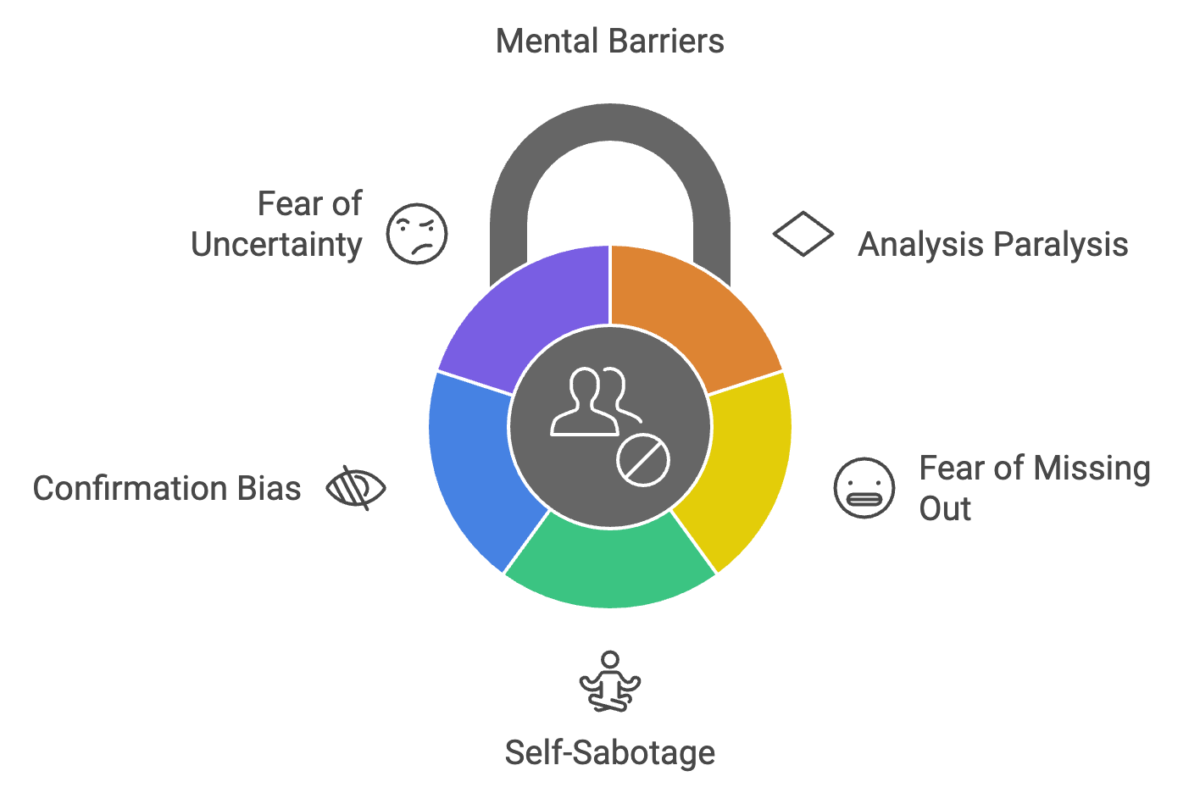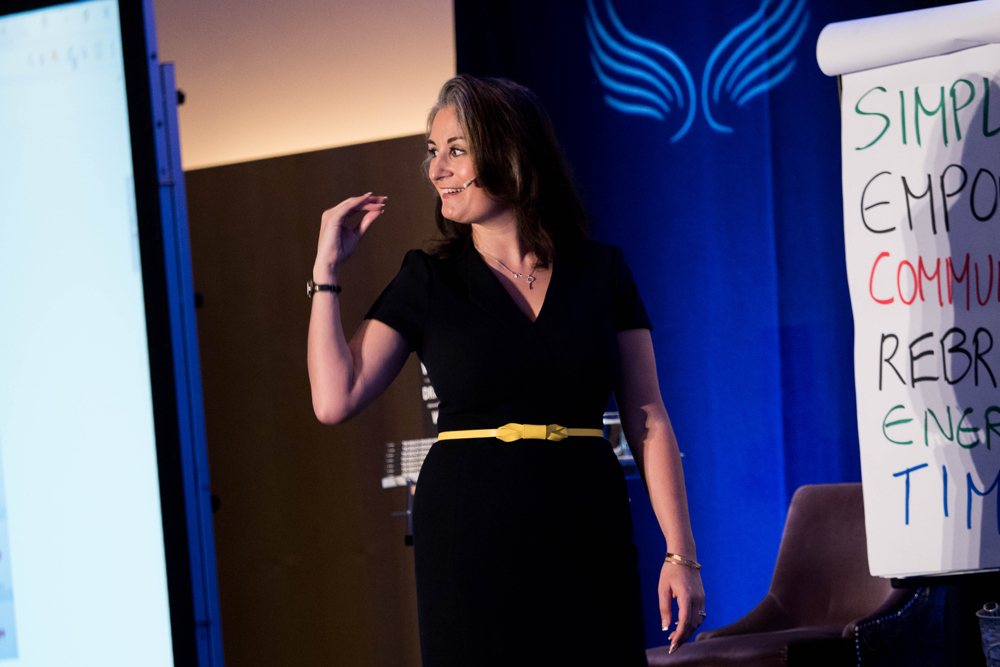Exploring Your Options: Opening the Door to Possibilities
Decision-making isn’t just about choosing between two paths; it’s about unlocking the multitude of opportunities that exist in every scenario. Step 1 of this process, crafting a situation statement, gave you clarity on your current context. If you haven’t completed that step yet, it’s essential to do so—either revisit our article or book a coaching session to get back on track. A clear situation statement lays the foundation for meaningful exploration.
Now, in Step 2, we dive into exploring your options—a process that combines creativity, neuroscience, and practical tools to uncover possibilities you might never have considered. This stage is transformational, rewiring your brain to embrace opportunity while overcoming common pitfalls.
The Role of Neuroscience
Your brain is a highly selective machine, constantly filtering information to focus on what it deems relevant. This filtering is controlled by the Reticular Activating System (RAS), a neural network in the brainstem that decides what gets your attention.
If your mindset is clouded by self-doubt or rigid thinking, your RAS will filter out opportunities that challenge those beliefs. For example:
- If you believe “I’m not good at problem-solving,” your brain will focus on confirming evidence, ignoring potential solutions.
- If you focus on failure, your RAS will spotlight risks and reinforce fear-based thinking.
However, when you shift your mindset to curiosity and openness, your RAS begins to work in your favour, identifying opportunities aligned with this new outlook. For instance:
- By asking “What options haven’t I considered yet?” your brain becomes primed to notice possibilities that align with this inquiry.
- Reframing challenges as opportunities activates the prefrontal cortex, enhancing your ability to think creatively and plan strategically.
Understanding the brain’s mechanisms for filtering focus, processing fear, and fostering creativity can radically enhance your ability to identify and evaluate options.

Let’s unpack these processes.
1. The Power of Focus: Unlocking the Reticular Activating System (RAS)
The Reticular Activating System (RAS) is a network of neurons located in the brainstem that acts as a filter, deciding which information in your environment gets your attention. Every second, your brain is bombarded with millions of stimuli, and the RAS ensures you only focus on what aligns with your beliefs, priorities, and goals.
- Negative Impact of Limiting Beliefs:
If your mindset is fixed, self-critical, or fear-driven, the RAS will focus on data that reinforces these beliefs. For example, if you believe, “I’m not good at public speaking,” your RAS will highlight every instance that confirms this narrative, while ignoring evidence of your successes. - Positive Impact of an Open Mind:
When you consciously shift your focus to curiosity and possibility, the RAS begins to surface opportunities that align with this mindset. For instance, if you’re open to career growth, you may suddenly notice networking opportunities, new skills to learn, or inspiring job posts—none of which seemed visible before.

Practical Example:
Imagine you’ve been feeling stuck in your career, assuming there are no growth opportunities in your current role. After adjusting your focus to seek possibilities, you notice an internal leadership programme announcement you’d previously ignored. This isn’t because the opportunity didn’t exist—it’s because your RAS wasn’t attuned to it.
2. The Power of Positive Self-Talk: Shifting Your Mindset for Growth
Negative self-talk isn’t just demoralising—it directly impacts the brain’s ability to generate creative solutions. When you engage in thoughts like “I can’t do this” or “There’s no point trying,” the amygdala, responsible for processing fear, becomes overactive. This triggers a fight-or-flight response, narrowing your focus and hindering problem-solving.
Conversely, positive and open-ended questions activate the prefrontal cortex, the brain’s centre for innovation and planning. Reframing your internal dialogue with questions like:
- “What’s the best that could happen if I tried?”
- “What could I learn from this experience?”
- “What resources or strengths haven’t I tapped into yet?”
…creates psychological safety, unlocking your brain’s ability to see possibilities.
Practical Example:
Instead of thinking, “I’m not good enough to apply for that promotion,” you could ask, “What’s one strength I could highlight in my application that sets me apart?” This subtle shift primes your brain to identify opportunities rather than obstacles.
3. The Power of Creativity: Engaging the Default Mode Network (DMN)
The Default Mode Network (DMN), often referred to as the brain’s creative hub, plays a pivotal role in generating new ideas and making unexpected connections. This network activates when your mind is at rest—during moments of daydreaming, idle reflection, or even while engaging in repetitive tasks like walking or showering. Unlike the structured, task-focused parts of your brain, the DMN thrives on novelty, unconstrained thinking, and seemingly unrelated concepts.
Engaging the DMN requires a deliberate embrace of downtime and curiosity. Activities like freewriting, mind-mapping, or role-playing scenarios help stimulate this part of the brain, allowing it to explore abstract and creative possibilities. The DMN doesn’t just produce ideas; it weaves together past experiences, emotions, and knowledge into innovative solutions.
How to Harness the Power of the DMN
- Give Yourself Permission to Pause:
Stepping away from a problem can feel counterproductive, but neuroscience shows that the DMN works best when you stop actively trying to solve something. Take breaks, allow your mind to wander, and avoid overstimulation. - Engage in Playful Exploration:
Activities like drawing, doodling, or imagining fantastical solutions may seem trivial, but they activate neural pathways linked to divergent thinking. For example, imagining how you’d solve a problem as a child might can unlock out-of-the-box insights. - Switch Contexts:
Shifting your environment or engaging in low-pressure tasks can provide the perfect backdrop for the DMN to spark ideas. Many people find their best ideas while cooking, gardening, or taking a walk. - Practice Mindful Rest:
Rest doesn’t mean mindless distraction. Replace screen time with meditative activities or quiet contemplation to let the DMN work without interruptions.

Practical Example
Imagine you’re stuck on a project at work and can’t seem to find a solution. Instead of forcing yourself to grind through the problem, you decide to take a 20-minute walk in the park. As your mind drifts, you recall a completely unrelated podcast episode you heard last week. Suddenly, you see a connection between the podcast topic and your project—a fresh perspective you wouldn’t have found if you’d stayed at your desk.
By deliberately engaging the Default Mode Network, you can shift from rigid, linear thinking to a more expansive, creative mindset. This process is a powerful reminder that rest isn’t just relaxation—it’s a vital component of problem-solving and innovation.
Strategies for Exploring Options
1. Brainstorm Without Limits
Your brain is wired for creativity, especially when you remove constraints. The default mode network (DMN), which is activated during daydreaming and free thinking, thrives on novelty and divergent thinking.
To harness this power:
- Use prompts like “What would I do if there were no barriers?”
- Incorporate visual brainstorming tools like mind maps to generate and connect ideas.
- Allow space for playfulness—sometimes absurd or unconventional ideas lead to breakthroughs.
Remember, the goal at this stage is to expand possibilities, not to evaluate them. Judgment can come later.

When brainstorming, as your goal is to generate as many ideas as possible you need to do this without self-censorship. Neuroscience shows that the most innovative solutions often emerge when we suspend judgment.
- Tap into Divergent Thinking:
Ask expansive questions like:- “What if money or time weren’t a factor?”
- “How would I approach this if success were guaranteed?”
- “What would a completely unconventional solution look like?”
- Use Visual Tools:
Techniques like mind mapping or drawing out scenarios can stimulate your visual cortex, revealing connections you might not notice otherwise. - Play with Absurdity:
Brainstorming wild or impossible ideas can often lead to practical breakthroughs. For instance, asking, “What if I could teleport to work?” might spark ideas for reducing commute stress, such as flexible hours or remote work.
Practical Example:
If you’re exploring ways to improve work-life balance, your brainstorming might include everything from adjusting work hours to hiring help at home. Even seemingly unrealistic ideas, like living on a tropical island, could lead to actionable insights—such as incorporating more time outdoors into your routine.
2. Reflect on Core Values
Organising your options around your core values helps you prioritise what truly matters. Neuroscience supports this alignment, as reflecting on values activates the medial prefrontal cortex, enhancing self-awareness.
Ask yourself:
- Which options align with my long-term vision?
- How does each choice reflect my priorities (e.g., family, career growth, health)?
Practical Example:
When choosing between two job offers, you might realise that one aligns better with your value of work-life balance, even if it offers a slightly lower salary.
Overcoming Pitfalls
Even with the best tools, certain common pitfalls can hinder progress. Recognising and addressing these is key:
- Analysis Paralysis:
Overthinking activates the dorsolateral prefrontal cortex, which can lead to rumination. Feeling overwhelmed by too many choices can freeze decision-making. To combat this, prioritise options that align with your values. Use tools like mind mapping or decision matrices to organise and assess possibilities. Set a time limit for decision-making or take breaks to let your subconscious process ideas. - Fear of Missing Out (FOMO):
The amygdala’s fear response might make you fixate on finding the “perfect” option. Remind yourself that no single choice defines your future—it’s your actions that shape success. - Self-Sabotage:
Negative thought patterns suppress the hippocampus, hindering learning and growth. Counter this by journaling about past successes or practising gratitude to shift focus to possibilities. - Confirmation Bias
It’s tempting to focus on options that validate your preconceptions. Challenge yourself to consider alternatives, even those outside your comfort zone. Ask, “What’s the strongest case for the option I’m least comfortable with?” - Fear of Uncertainty
Uncertainty can feel uncomfortable, but it’s often a sign of growth. Instead of fearing the unknown, reframe it as an opportunity to learn. Remember, even small steps toward a new option can yield significant insights.
Rewiring Your Brain for Possibility
Exploring your options isn’t just an intellectual exercise—it’s a way of rewiring your brain to see opportunity, creativity, and growth. By leveraging tools like the RAS, self-talk, and the DMN, you can create a mindset that thrives on possibility.
Actionable Next Steps
Here’s how to put everything into practice:
- Review Your Brainstorm:
Look at the ideas you’ve generated and identify which align most with your values and excite you. - Prepare for Step 3:
Reflect on the internal beliefs and external resources that might limit or enhance your ability to pursue these options. - Seek Guidance if Needed:
If you feel overwhelmed or stuck, our decision coaches can help you navigate this process, offering tailored support to clarify priorities and overcome roadblocks.
Exploring your options is about more than making a choice—it’s about expanding what you believe is possible. By understanding how your brain filters information, fostering a positive internal dialogue, and embracing creative thinking, you can unlock opportunities that align with your values and goals.
If you’ve found this step straightforward, get ready to dive into Step 3, where we’ll tackle the limitations and beliefs that shape your decision-making. If you’re struggling, don’t hesitate to reach out. Our decision coaches are here to provide clarity, support, and actionable strategies to guide you forward.
Every choice is a step toward the life you’re building—let’s make it extraordinary.

















